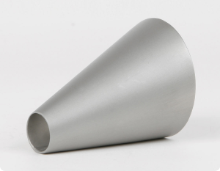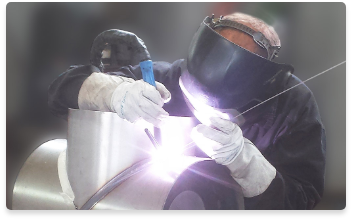
Sealing Concepts
Teekay Couplings are available in two configurations: Axilock and Axiflex
Teekay Pipe Couplings allow pipes to be joined withoud the need for flanging, grooving,
threading or welding. By simply butting two pipes together and connecting with a Teekay
Pipe Coupling, space, weight, time and cost savings are achieved with every installation.
Each coupling (whether Axilock or Axiflex) consists of a casing, a gasket and a lockpart. The
purpose of the casing is to house the gasket and to press it onto the pipe surface when the
lockpart is closed. The lockpart is designt to pull the two ends of the casing together
circumferentially around the pipe. In order to achieve this, the coupling is labelled clearly
with a torque which ensures that the gasket is compressed sufficiently against the pipe
sureface.
Part 1 - Axilock
The Axilock has two anchor rings which are placed adjacent to (figure. 4/8), but separate from the
sealing mechanism.(figure 3/8).
As the Lockpart is tightened the sealing lips are pressed against the pipe sureface to from
a seal. At the same time two anchor rings penetrate the rubber, bite into the two pipes and
prevent them from pulling apart., whether bay external loading or internal pressure. The end
seal (figure 2/8) is also pressed against the pipe sureface, which protects both the anchor ring and the
section of the pipe where the anchor rings have bitten, from any possible external corrosion.
(figure 5/8).
Stainless steel TEEKAY installation technology mechanism & sealing
Sealing Concepts
Teekay Couplings are available in two configurations: Axilock and Axiflex
Teekay Pipe Couplings allow pipes to be joined withoud the need for flanging, grooving,
threading or welding. By simply butting two pipes together and connecting with a Teekay
Pipe Coupling, space, weight, time and cost savings are achieved with every installation.
Each coupling (whether Axilock or Axiflex) consists of a casing, a gasket and a lockpart. The
purpose of the casing is to house the gasket and to press it onto the pipe surface when the
lockpart is closed. The lockpart is designt to pull the two ends of the casing together
circumferentially around the pipe. In order to achieve this, the coupling is labelled clearly
with a torque which ensures that the gasket is compressed sufficiently against the pipe
sureface.
Part 1 - Axilock
The Axilock has two anchor rings which are placed adjacent to (figure. 4/8), but separate from the
sealing mechanism.(figure 3/8).
As the Lockpart is tightened the sealing lips are pressed against the pipe sureface to from
a seal. At the same time two anchor rings penetrate the rubber, bite into the two pipes and
prevent them from pulling apart., whether bay external loading or internal pressure. The end
seal (figure 2/8) is also pressed against the pipe sureface, which protects both the anchor ring and the
section of the pipe where the anchor rings have bitten, from any possible external corrosion.
(figure 5/8).



